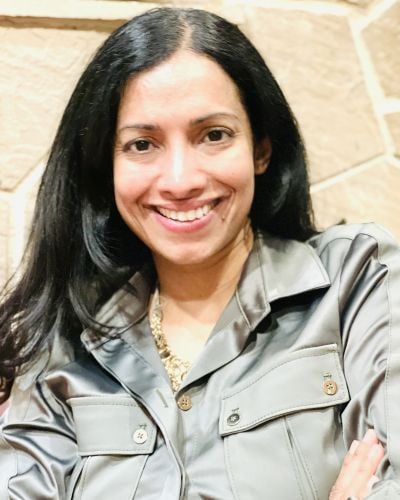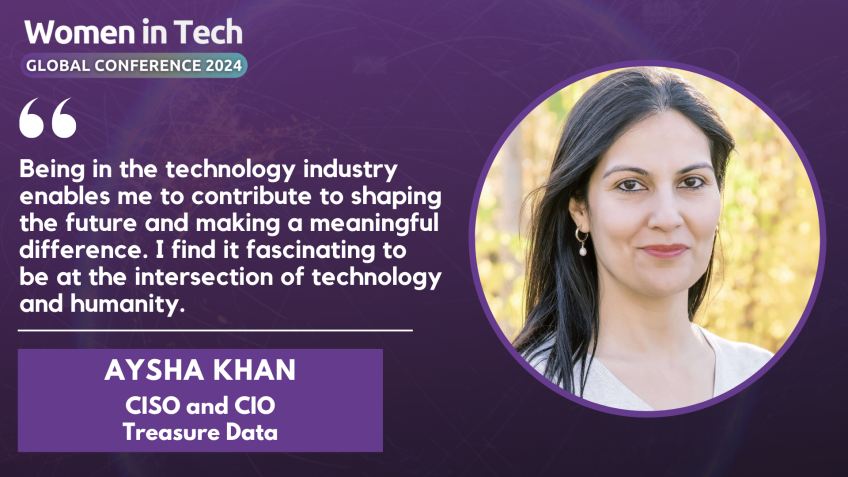Building trust among diverse leaders and groups
Suba Vasudevan
Vice PresidentImplementing Trust Among Diverse Leadership Groups: Insights from Suba Vasudevan
Greetings everyone! I'm here today to unpack some valuable insights shared by Suba Vasudevan, a remarkably adept Vice President within global operations at Meta. Suba has spent years assembling and working with various global functions and leadership teams. In this blog, we'll delve into the important theme of building trust among diverse leadership groups, based on Suba's experiences and insights.
Initiating Trust in a New Team
According to Suba, setting the tone for a new leadership group is crucial. She once took over a brand new leadership team, members of whom had different levels of familiarity and cordiality with each other. At the outset, she emphasized an "in it together mindset". "No politics," she told her team, "be honest, be direct, up level, help each other." This bold, clear communication surprised the team – subsequently setting the tone and norms of the group.
Tackling Subconscious Biases
Suba underscored that subconscious biases can come from unexpected sources, which can affect a team's dynamics and its capacity to trust. For instance, she once hired a former journalist whose unfamiliar professional jargon initially confused the tech-focused team. Through open conversations and willingness to rephrase and learn from each other, trust began to cultivate, and the journalist eventually became a successful team manager.
Building a Village of Allies
Far from being a one-person task, building trust in a diverse leadership group involves creating a “village of allies” within and across teams. Suba cites the experience of onboarding a new leader from an industry entirely different from the rest of the team in the fall of 2020, in a completely remote setting due to the pandemic. Building trust and facilitating connections required intentional efforts over time, highlighting the need for cross-functional collaboration and mutual understanding.
Evaluating Trust Levels and the Importance of Diversity
Suba introduced an interesting framework to evaluate and score trust levels within a diverse team. It focused on identifying top values, respect, and openness. Alongside this, she emphasized the essential role of diversity in leadership groups. "The sum of our lived experiences, who we are as humans, our values, and how we think equates to the uniqueness we bring to any group or setting", she commented. In this diverse setting, leaders have to elevate, celebrate, and learn from the differences, manifesting them into a harmonious group dynamic.
Introducing the First-Team Concept
Next, we delve into the concept of the "First-Team", based on ideas formulated by Patrick Lencioni. Basically, the first-team concept stipulates that leaders should prioritize supporting their counterparts over their direct reports, fostering a culture of accountability, transparency, role clarity, and deep care.
Driving Success in Diverse Leadership Teams
Suba offers practical steps towards driving success within diverse leadership groups. Know your table stakes, show clear accountability, transparency, and role clarity. Prioritize elevating diversity, communicating decisions explicitly, and avoiding back channels. Additionally, Suba encourages us to adopt the ‘First team’ mindset and approach that emphasizes collective success over individual wins.
Building a Legacy
In conclusion, I’d like to reiterate Suba Vasudevan’s key message: building trust takes time, effort, and ongoing commitment from all team members. The benefits of a trusting, inclusive, and diverse team are indeed worth the investment. Remember, the ultimate goal is to leave a legacy of having positively scaled an organization, coached others, and elevated them.
Feel free to reach out to Suba directly on LinkedIn if you have more questions or need further insights into building trust within diverse leadership groups.
Video Transcription
Right. Hi, everybody. Thanks for joining me today. My name is Suba Vasudevan and I'm a vice president within global operations at Meta.Over the years, I've had the pleasure and honor of working on as well as building out multiple global functions and as a result, hiring and bringing together diverse leadership groups. But along the way, I've experienced and observed failures as well as successes, which is what I would love to share today. So today, we'll talk a little bit about how to implement and build trust amongst diverse leadership groups. Let's start with an example. I once inherited a brand new leadership team, some of them knew each others. Others didn't, some had never connected with each other before and yet others had told themselves stories about each other over time, some great stories and some not so much. I knew all this because I had spent sufficient time, one on one with them to understand this and in some cases intuit this info in our very first leadership off site together, I decided to make some shocking statements and I say the word shocking because I think it did surprise some people, but mainly it set the tone.
I basically kicked it off, welcomed everyone and said, this is how this new leadership group we are going to operate. We're gonna have an in it together mindset first point and I use these words. I said no politics. If you have an issue with someone, talk to them first about it. If you cannot see eye to eye, come to me together, we're not gonna have passive whispers on the side. Be honest, be direct. Two, I expect you to up level and really help each other have each other's backs. That's table steaks expectation and three focus on the work at hand, less on the edge cases of what we own, what we don't own et cetera because that can just lead to inefficient use of time. I'm telling you that surprised people because that's not what they expected in our first ever leadership coming together of the group. But it really helped me as a leader set the tone because after all things like these can start with subconscious biases from unexpected places.
For example, I once hired a former journalist, this person's entire career had been spent in journalism and not in big tech. They came to me in week one and said, the team seems confused because I'm asking all these questions. The question seemed basic to me. Why is the team so confused? I dug in and realized it's not because they were asking questions. It's not because of the types of questions. We were a very helpful culture. After all. In fact, it was about the taxonomy, the language being used. So basically, I had them reframe their original request for help to say, help me ask the questions in a language that resonates over time. Of course, we reached a middle ground of taxonomies language so we could learn from the amazing people that we were hiring and just didn't stick to our methods of doing things. But all of this took time and this helped us to build trust. This person went on to be one of our most successful people managers. But I realized me as the hiring manager alone couldn't help them. You can never help a newly hired leader on your own. And this applies to anyone you hire on the team. I quickly realized the team needed to understand the differences and backgrounds, the diversity of experiences people were bringing to the table and so did partner departments or cross functional functions, so to speak. And I realized I needed to find this person, mentors a village, a village of allies.
Another example is during the fall of 2020 I remember that year, I hired a phenomenal leader 10 yard coming from an industry that none of the rest of us were from very different background ie diversity, but they were completely remote, did not have the benefit of in person interactions and culture building that everybody else had had as a baseline in my group.
So they felt like they were on shaky ground for a while. It's only when they spent time with each other. Almost 18 months later that they felt like they had real trust and connection because of that in person meet up. By the way, I've also had the joy of working on cross department leadership teams where you come together on a cadence set strategy, road maps, vision, vision, et cetera towards a common business goal. So this isn't just about your own leadership team or your immediate team.
It could be about a cross functional or cross department team. So you really do need to think about this and apply these concepts that I'll share today across any group. I once had a leader in Asia Pacific, they were adept at building relationships themselves, but often I felt like they were, I was their go to point for things and I simply kept redirecting them to their peers that caught me thinking about the concept of trust and how to build trust amongst the diverse individuals.
I had hired globally as well. So for many of you who've heard of the first team concept, it's a concept articulated by Patrick Lencioni. Way back when I'm gonna explain that a little bit later in my presentation, as I've used that as one of the tools in my tool kit to set expectations for my teams. But first, let's examine two important aspects, trust in the context of a workplace team and diversity in leadership teams. And then we'll talk about how we put all of that together. So when it comes to trust several years ago, I was asked to build out the operating model for a cross functional or cross departmental group, a group of smart, well intentioned, highly accountable leaders who did not know how to operate as a group coming together for the first time.
I know this reminded me of my fifth graders getting put on a new basketball team for the first time and really figuring out their position on the team or how to play with each other. It really felt like that we were feeling each other out for a while and really trying. So I decided to have a little exercise questions. I asked them to work on together. This included me was one. Why are we coming together? It's shocking to ask a basic question like that because you'll realize everybody's notion of the why can be different. And that's important. I then asked the question, how much do we value each, each of us coming together as this group? Everybody said, oh yeah, it's important.
Of course, we want to come together. But then I said, why? What is our vision for each other that stumped several people. It truly got us as a group thinking often at companies we operate in a positional model or functional or matrix model. Give any name you like But if they don't come together as a core group of leaders who save, who serve the same common purpose, goals and business outcomes with intention, we're not gonna achieve the same speed and success. Final question that I asked the group, how much trust does exist? Now? That was interesting. Let's talk about that in a second one thing I'll say before I'm gonna project something here is trust is not a straight line. It can take a long time to build is highly dependent on the humans as well as the circumstances involved. Building trust is important. But moving away from active distrust is critical and that can be a real challenge. What shocks me often as I talk to different leaders across companies is how few of them are trying are trying to call these out when they see them around themselves, moving away from active distrust as you think about that, I'm gonna quickly project one thing here for everybody to look at all, right.
So what I'm projecting right now is a framework for evaluating and scoring trust levels. And we've talked, you know, you do you have frameworks for risk evaluation of companies and whatnot. This is literally for trust amongst people. So I have a very simple thing, a very simple framework that you can use and apply the way you like. What are your top three values and behaviors. That's something leaders should share about themselves openly when bringing to the together any group and set these as expectations for their groups. And then on the other hand, you have something that's always on respect and openness. This is something everybody will immediately seek from a group that they are a part of how you use. This framework is really simple and it's up to you, you use that table to fill in your top three, assign a score against it, use your use whatever rating level you like. That's the beauty of it. Once you finished scoring, assign levels of trust, I have a few, a little bit of taxonomy here. You can use that. You can use something else. It's up to you.
But the idea of assigning a taxonomy and having a score or having a common framework is to have an anchor is to be able to come back to the anchor from time to time and be able to dig into how much trust does exist or does not exist, which is the only reason why I even recommend having something like a framework.
I've used this before frameworks like these leave open wide room for interpretation, but at least you can move on with low hanging fruit and solving for those problems. By the way, this can go forwards or backwards, right? Trust can start to move forward in the right direction and then move backwards because of situations or people coming in and out. The second important concept in all of this is diversity, diversity matters. You all know this. We all know this, especially in today's day and age.
It matters in how we hire, who we hire, how we train, retain, invest, sponsor, et cetera. Sometimes you're handed a team of individuals and organizations to fix. Sometimes you hire intentionally. Either way is everyone has a unique viewpoint and different stylistic approaches.
Everyone brings diversity of thought and leadership to the table. The sum of our lived experiences who we are as humans, our values and how we think equates us to, to the uniqueness we bring to any group or any setting. But even the best intentioned people don't automatically trust each other. It could be competitiveness, it could be a complete stylistic difference. So people just don't resonate with each other. It could be that something situational was thrown at two people otherwise completely well intentioned.
It's completely unexpected as well at times, but it's our jobs as leaders to recognize and elevate those differences in a way that it leads to truly beautiful music. In the end with that, I want to refer everyone to a book that really resonated with me called Say Yes To The Mess by Frank Barrett. It focuses on A L A lot on how leaders today need to improvise based on principles jazz musicians use. But one paragraph stood out to me from the book and I'm gonna read this out. It says, and I'm paraphrasing jazz players don't innovate by isolating or breaking off from others. They don't wait for inspiration. And then the book goes on to say how they innovate by being tightly coupled to a diverse group of specialists, noticing the potential in people, ideas, et cetera that is powerful. Let that sink in for a second. When you think about the diversity of any group, I'll repeat that the book is called Say Yes To The Mess by Frank Barrett. It's a wonderful book. A lot can be said about listening, intentionally learning building awareness and then acting as allies in a diverse setting. A lot can also be said about our diversity journeys as individuals. We're at various stages. It requires incredibly nuanced thinking and leadership and most of all deep, deep care and investment.
So now that I've talked a little bit about the trust framework and a few different ideas around diversity, let's put all of this together to see how we bring together a successful diverse leadership team or any group for that matter. As I said, first, let's understand where a leadership group is at. Functional, dysfunctional somewhere along the way. But we also need to look at ourselves in the mirrors as leaders and acknowledge where we are at with investing in making any group way more functional. Don't get me wrong.
This isn't about rara or family, this is about work. I get it, but it's also about humans capable competent individuals who are at a workplace and do need care. So we all need tools to drive success in such a setting. One thing I realized is as I matured as a leader, one of the biggest things I did is I had to take myself out of the equation. It could no longer be about me. It had to be about them, the leadership group that surrounded me or that I had hired that reported into me, it had to be about them for each other and for the rest of the organization. And no, this doesn't come out of some sense of false humility or fake back end approach. It actually is truly about building a culture of that team first for itself. It's that existing concept I referred to as first team earlier, we're gonna come to it in a second. Look it up. First team articulated by Patrick Lencioni is the idea that true leaders prioritize supporting their fellow leaders over their direct reports. I know shocking, but there's a version of it that every company, every group can adopt, adapt for itself, so to speak. So let's talk about my tools, know your table stakes as a leader. Look at yourself in the mirror for me. There are five or six things here. One accountability, you could be a unifier connector, a vision vision setter.
But at the end of the day, you are accountable as a leader. It's your job role modeling, high accountability drives that amongst the groups that you represent or work with two is a no brainer show care. As a manager, custom approaches to showing care are required. I'll give you a super simple example when I first started working in the US. This is 20 plus years ago. At this point, a lot of pop culture references from growing up here in the seventies and eighties fell flat for me. I felt excluded from social conversations with coworkers as a result because I just had not grown up here. I had grown up in a different country with different pop culture references growing up. So what did that do to me? I'm an extrovert or at least consider myself one. It eroded my confidence. I felt like I had to throw myself extra hard at work to prove myself to coworkers. That's just crazy. Right? Eventually, as I matured, I realized I had to name it and call it out. So I started telling people that a particular reference or a phrase just didn't land for me over time. I've started coaching those around me to be very careful with all of these little areas and aspects. Three, elevate the diversity of your team, make a point about it. That's great, celebrated but also elevated backgrounds, uh Introverts, extroverts different perspectives. It could be anything watch for when someone sucks up space or steamrolls of others and be careful not to get that in your decision making as well. Be very careful. I know it sounds basic.
We move fast. As leaders in our day to day and can forget these little things. Next. Be transparent. You have to be a leader who communicates decisions transparently does not back channel them with person one or person two. That's the fastest way to erode success in your group.
I remember a relatively dysfunctional leadership team. I was once a part of once that manager left and I took over the team. Someone came to me and said, no pair wise conversations, please. No back channeling that eroded trust for me. That wasn't aha moment for me. I didn't realize that that had caused so much grief for this individual who was my peer. Finally provide role clarity. I have found that often trust amongst the most well intentioned and diverse groups is low because of lack of role clarity. People are running into each other, stepping on each other's toes. Sometimes it's our jobs as leaders to acknowledge that and create tools to prevent such misunderstandings. The second big part of what I want to talk about today is the first team mindset and approach. Go check out what Patrick Lencioni has to say. The whole concept may not be for everyone, but you have to be very clear. If you put yourself at the center of things that group that you're trying to invest in and make functional is never gonna really become functional. Think about it this way. If a peer of yours calls you with feedback for someone on your direct leadership team. What's your immediate instinct? Are you gonna protect the team member or listen to the peer? Do you like being at the center of things or are you able to take a step back and let your team build their own relationships?
You could always have a cadence where if something needs to be escalated to you, it comes to you together and not on the side from one person, There's a lot more that I can say about first team and I see a few questions coming in. So I wanna acknowledge that. Um But I want to finish 11 or two other thoughts here. Building trust takes time and effort. It requires ongoing commitment from everyone on the team and those benefits of a trusting, an inclusive team are well worth the investment. There are some tactical things you can do team exercises. Ask your team what makes you tick as a human? By the way, you need to role model vulnerability as a leader, strength, understanding, understand the strengths of your team. It's an aha moment for people to know, oh, this person is high on a learner dimension and therefore asks a lot of questions. They mean, well, finally have failure, stories and post mortems, the more you talk about your appetite for failure, the better we have just a few seconds left. I'm gonna conclude by saying this all matters a lot because you want to be that leader that invested in a legacy of scaling an organization and a group. Well, you care, deeply coached, others elevated them. There's a lot more that can be said here.
I see questions coming in and apologize for not taking them because we're at time, feel free to reach out to me on linkedin if you'd like me to answer your questions. Thank you very much to the women in tech conference and everybody and anybody who's watching this webinar. Bye. Thank you.






